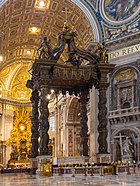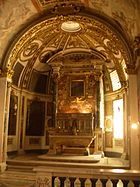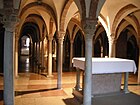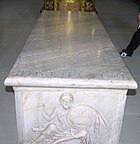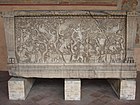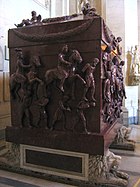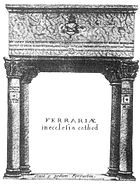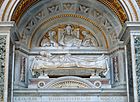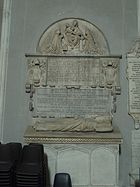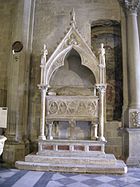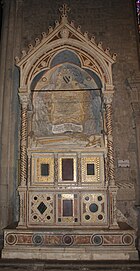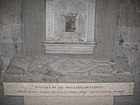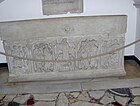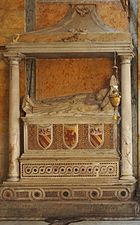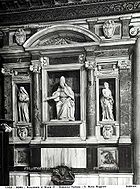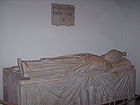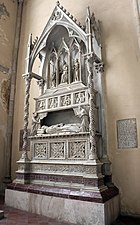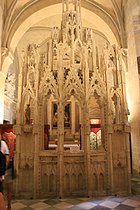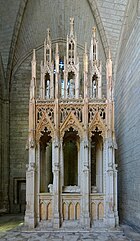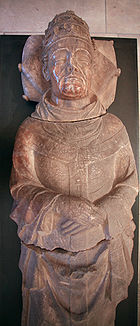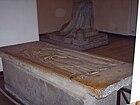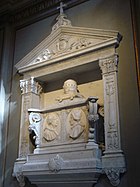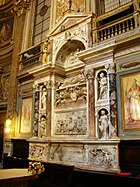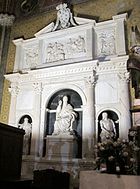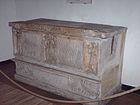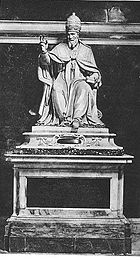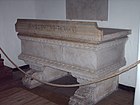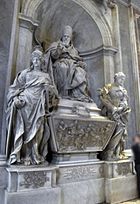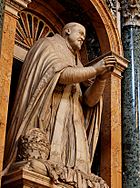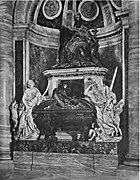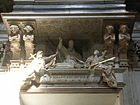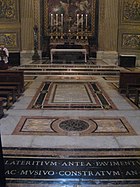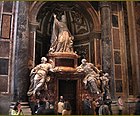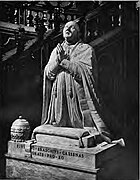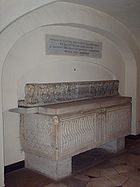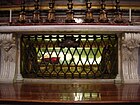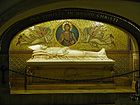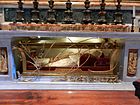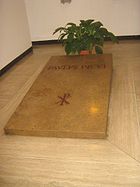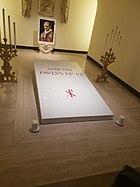An antipope is a person who claims to be Bishop of Rome and leader of the Catholic Church in opposition to the legitimately elected pope. Between the 3rd and mid-15th centuries, antipopes were supported by factions within the Church itself and secular rulers.

Pope Callixtus I, also called Callistus I, was the bishop of Rome from c. 218 to his death c. 222 or 223. He lived during the reigns of the Roman emperors Elagabalus and Alexander Severus. Eusebius and the Liberian catalogue list his episcopate as having lasted five years (217–222). In 217, when Callixtus followed Zephyrinus as Bishop of Rome, he started to admit into the Church converts from sects or schisms. He was killed for being Christian and is venerated as a saint by the Catholic Church.
Pope Felix I was the bishop of Rome from 5 January 269 to his death on 30 December 274.
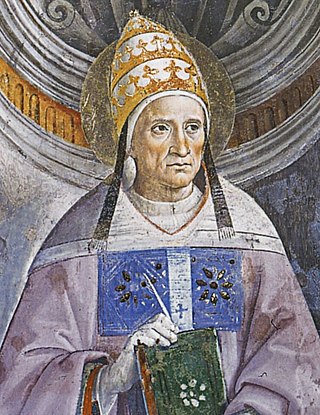
Pope Anterus was the bishop of Rome from 21 November 235 until his death on 3 January 236.

Pope Pontian was the bishop of Rome from 21 July 230 to 28 September 235. In 235, during the persecution of Christians in the reign of the Emperor Maximinus Thrax, Pontian was arrested and sent to the island of Sardinia.

The Archbasilica of Saint John Lateran is the Catholic cathedral of the Diocese of Rome in the city of Rome, and serves as the seat of the bishop of Rome, the pope. The archbasilica lies outside of Vatican City proper, which is located approximately four kilometres northwest. Nevertheless, as properties of the Holy See, the archbasilica and its adjoining edifices enjoy an extraterritorial status from Italy, pursuant to the terms of the Lateran Treaty of 1929. Dedicated to the Christ, in honor of John the Baptist and John the Evangelist, the place name, Laterano (Lateran) comes from an ancient Roman family (gens), whose palace (domus) grounds occupied the site; the adjacent Lateran Palace was the primary residence of the pope until the Middle Ages.

Arnolfo di Cambio was an Italian architect and sculptor of the Duecento, who began as a lead assistant to Nicola Pisano. He is documented as being capomaestro or Head of Works for Florence Cathedral in 1300, and designed the sixth city wall around Florence (1284–1333).
Pope John XIV, born Peter Canepanova, was the bishop of Rome and ruler of the Papal States from December 983 until his death. Upon the death of Pope Benedict VII in July 983, Emperor Otto II nominated Canepanova to the papal throne after the abbot Maiolus of Cluny refused the office. The decision to install the then bishop of Pavia was made without consultation with the clergy and the Roman people, nor was it confirmed by formal election.

The Basilica Papale di San Lorenzo fuori le mura is a Roman Catholic papal minor basilica and parish church, located in Rome, Italy. The Basilica is one of the Seven Pilgrim Churches of Rome and one of the five "papal basilicas", each of which was assigned to the care of a Latin Church patriarchate. The basilica was assigned to the Patriarchate of Jerusalem. The basilica is the shrine of the tomb of its namesake, Lawrence, one of the first seven deacons of Rome who was martyred in 258. Many other saints and Pope Pius IX are also buried at the Basilica, which is the centre of a large and ancient burial complex.

Saint Peter's tomb is a site under St. Peter's Basilica that includes several graves and a structure said by Vatican authorities to have been built to memorialize the location of Saint Peter's grave. St. Peter's tomb is alleged near the west end of a complex of mausoleums, the Vatican Necropolis, that date between about AD 130 and AD 300. The complex was partially torn down and filled with earth to provide a foundation for the building of the first St. Peter's Basilica during the reign of Constantine I in about AD 330. Though many bones have been found at the site of the 2nd-century shrine, as the result of two campaigns of archaeological excavation, Pope Pius XII stated in December 1950 that none could be confirmed to be Saint Peter's with absolute certainty. Following the discovery of bones that had been transferred from a second tomb under the monument, on June 26, 1968, Pope Paul VI said that the relics of Saint Peter had been identified in a manner considered convincing. Only circumstantial evidence was provided to support the claim.
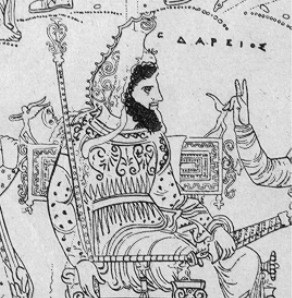
The origins of the papal tiara remain somewhat nebulous and clouded in mystery, first appearing in the Early Middle Ages, but developing a recognizable form in the High Middle Ages, after the Great Schism of 1054. The word tiara itself occurs in the classical annals to denote a Persian headdress, particularly that of the "great king". A camelaucum which was similar in shape to papal tiaras, was part of court dress in Byzantium; it was also inspired by the Phrygian cap, or frigium. Given that other rituals associated with the papal coronation, notably the use of the sedia gestatoria, were copied from Byzantine and eastern imperial ceremonial, it is likely that the tiara is also of Byzantine origin.
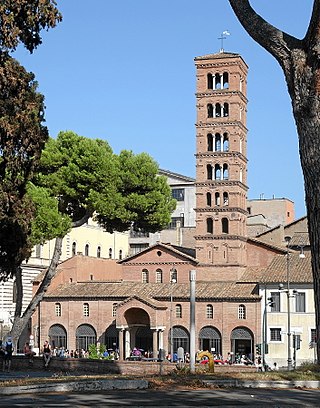
The Basilica of Saint Mary in Cosmedin is a minor basilican church in Rome, Italy, dedicated to the Virgin Mary. It is located in the rione (neighborhood) of Ripa. Constructed first in the sixth century as a diaconia (deaconry) in an area of the city populated by Greek immigrants, it celebrated Eastern rites and currently serves the Melkite Greek Catholic community of Rome. The church was expanded in the eighth century and renovated in the twelfth century, when a campanile was added. A Baroque facade and interior refurbishment of 1718 were removed in 1894-99; the exterior was restored to twelfth-century form, while the architecture of the interior recalls the eighth century with twelfth-century furnishings. The narthex of the church contains the famous Bocca della Verità sculpture.

Old St. Peter's Basilica was the church buildings that stood, from the 4th to 16th centuries, where St. Peter's Basilica stands today in Vatican City. Construction of the basilica, built over the historical site of the Circus of Nero, began during the reign of Roman Emperor Constantine I. The name "old St. Peter's Basilica" has been used since the construction of the current basilica to distinguish the two buildings.

In Old St. Peter's Basilica, the papal tombs were the final resting places of the popes, most of which dated from the 5th to 16th centuries. The majority of these tombs were destroyed during the 16th through 17th century demolition of the basilica, except for one which was destroyed during the Saracen Sack of the church in 846 CE. The remainder were transferred in part to new St. Peter's Basilica, which stands on the site of the original basilica.

The Catacomb(s) of Callixtus is one of the Catacombs of Rome on the Appian Way, most notable for containing the Crypt of the Popes, which once contained the tombs of several popes from the 2nd to 4th centuries.
The Catacomb of Calepodius is one of the Catacombs of Rome, notable for containing the tombs of Pope Callixtus I and Pope Julius I, along with the eponymous Calepodius.

The Catacomb(s) of Pontian is one of the catacombs of Rome on the Via Portuensis, notable for containing the original tombs of Pope Anastasius I (399–401) and his son Pope Innocent I (401–417). The Catacomb was discovered by famed Italian explorer Antonio Bosio in 1618.

Papacy in early Christianity was the period in papal history between 30 AD, when according to Catholic doctrine, Saint Peter effectively assumed his pastoral role as the Visible Head of the Church, until the pontificate of Miltiades, in 313, when Peace in the Church began.


